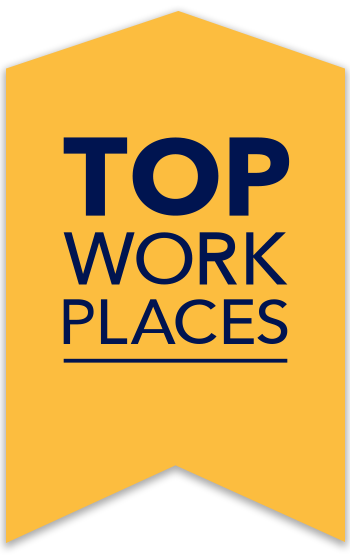For employers and employees, matchmaking has gotten more difficult. A recent Top Workplaces Research Lab study revealed that employers and job seekers are struggling with recruiting and hiring.
What ticks off job seekers the most? The frustration with the amount of time it takes to find a job, along with the added stress and spotty communication.
“The labor market has changed,” said Kinsey Smith, senior people scientist at Energage, which conducted the research. “Job seekers are no longer as patient. And there’s a dwindling pool of people willing to jump through all those hoops to work for an organization they are not sure is even the right fit for them.”
One example: There are big gaps in perceptions centered on clear communication of company culture. While 80% of employers believe they effectively convey their company culture to job seekers, only 30% of candidates share the same perception.
Furthermore, while 60% of employers said they felt they were regularly communicating, only 28% of job seekers said the communication was sufficient.
Both hiring organizations and job seekers agree that hiring, recruiting, and finding a job are more difficult than in past years. Post-pandemic, companies have been battling challenges around inflation, the great resignation, and issues around remote work, among others.
Hiring insights from employers and job seekers
The Top Workplaces Research Lab recently conducted a comprehensive survey, gathering insights from hiring organizations and job seekers to shed light on the hiring process. While there were some commonalities in their views, there were also significant disparities. Here are some other key findings.
Challenging times: Both employers and candidates report increased difficulty in hiring and job hunting compared to the pre-pandemic era.
Perception gap: Job seeker responses indicated a more negative interview process than what hiring organizations believed candidates at their organizations would experience.
Conveying the workplace experience: While 80% of employers believe they effectively convey their company culture to job seekers, only 30% of candidates share the same perception.
Dissatisfaction with time-to-fill positions: Nearly half of hiring organizations (47%) expressed dissatisfaction with the time it takes to fill vacant positions.
Effective recruitment channels: Hiring organizations reported that they find most candidates through employee referrals and job boards.
Effectiveness of hiring efforts: Surprisingly, only 56% of hiring organizations rated their hiring and recruiting efforts highly effective.
Where employers are finding talent
Of those employers surveyed, 78% said they find talent through referrals. Some 61% use job boards. Another 38% use word of mouth, and about a third rely on direct advertising. Another third said they used promotions and transfers to fill positions.
Recruiting and hiring obstacles
When asked what obstacles hurt the hiring and recruiting process, 62% of employers said there was a limited talent pool. About half said candidate expectations for pay were a barrier. Another third cited candidates unexpectedly dropping out of the process and a limited number of applicants. And 29% cited candidate expectations for remote work.
What job seekers value most
Not surprisingly, employees valued pay, work-life flexibility, and benefits (in that order) when looking for a job.
Recommendations from job seekers
When asked what would improve the process, job seekers said better communication, transparency about pay, a shorter process, and clearer expectations around the job itself.
Recommended hiring best practices for employers
- Communicate more, from start to finish, at every phase of the process.
- Streamline the hiring process.
- Be transparent about pay from the beginning.
- Design the process to be more inclusive of diverse candidates.
- Collect data on the most important aspects of the hiring process and use it to improve.
For employers struggling to fill spots, Smith said, “it might be time to look internally and see what they could be doing differently to try to shift things.” She said companies would be wise to assess their hiring process by talking with new hires and job seekers who did not join the organization.

